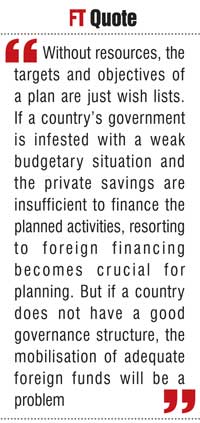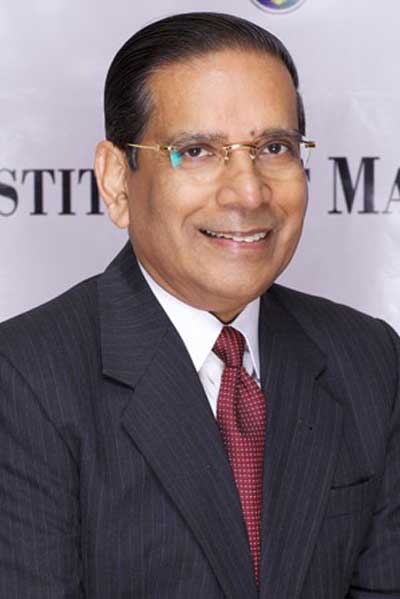Friday Apr 26, 2024
Friday Apr 26, 2024
Monday, 6 July 2015 00:00 - - {{hitsCtrl.values.hits}}
There are projects all over but many of them are failed projects
Human history is replete with projects enabling civilisations to deliver marvellous creations through them. But many of them have been failures right from the design stage. Sri Lanka’s recent history is marred by a plethora of such failed projects due to errors in design. Of them, the Hambantota Harbour failing to attract large draft ships due to low depth of the harbour, the Mattala Airport with a runway perpendicular to the headwinds forcing airlines to shun it and the Diyagama International
Sports complex with a running track slightly shorter in depth than the international standards so that no international sports event could take place are some striking examples.
The latest addition to this project failure is the acclaimed public private partnership involving the Hyatt Hotel project in Colombo in which costs have doubled due to profligate financial management, an issue involving the failure to observe economic policy governance.
All these issues in projects could be overcome if all those involved in public projects – politicians, bureaucrats, project managers and civil society – are conversant with the first principles of projects.
Now those first principles have been codified in a comprehensive manual type text by a Sri Lanka born academic – Nihal Amerasinghe – previously at the Asian Development Bank or ADB and now a professor at the Asian Institute of Management or AIM in Manila, the Philippines. The title of the text is ‘Design, Appraisal and Management of Sustainable Development Projects’.
A manual by an experienced practitioner
Nihal Amerasinghe is an aptly qualified academic cum practitioner to write a text on project management. His long career has been with ADB whose vocabulary has nothing but projects. Having completed a degree in agriculture at Peradeniya University in Sri Lanka, he has acquired two Master’s degrees in economics and environment from Manchester and London Universities, respectively, followed by a doctorate in economics from the latter. He is presently at AIM disseminating his wisdom as an academic. Thus, Amerasinghe is a combination of practice with theory, the foremost requirement for somebody to write a manual on a complex subject.
The logical organisation of the manual
The 25 chapters in Amerasinghe’s book have been presented in five parts: The first part talks about projects and development, the second about project identification and design, the third about project feasibility and appraisal, the fourth about project implementation and control and the fifth about the project completion and evaluation.
The chapters have been planned in such a way that they could be mastered by interested readers separately as individual essays or together as a single text to acquire the desired knowledge on project management.
Three serious flaws of development policy
Amerasinghe begins his book by analysing three serious flaws in development policy planning attributed to Romanian-American Economist at the University of California at Berkeley - Irma Adelman.
One is the reliance on a single contributor to keep economies at low growth called ‘monocausalism’. Over the years, many such important contributors have been identified but removing them from economies has not led to economic growth demonstrating that growth is a multifaceted activity. The second flaw is pursuing a single goal in development such as increasing per capita income as had been done in Sri Lanka during the administration of Mahinda Rajapaksa.
Amerasinghe says that such pursuits have brought in greater worries to countries such as inequality in income distribution, weakened democracy, loss of cultural identity, overconsumption of natural resources and environmental degradation and so on.
All these have been the result of Sri Lanka’s reported higher economic growth in the past few years. The third is the most serious flaw in policy: that is, believing that natural systems move on a straight line enabling a country to attain a pre-planned economic growth without any derailment.
Sri Lanka’s Central Bank and the Ministry of Finance have been famous for making such linear economic growth forecasts to find that actual realisations have always been at variance from the projected path. That is because all natural systems are non-linear based on such laws as the law of cause and effect, the law of impermanence and the law evolution. It is therefore of importance that Sri Lanka’s policy authorities learn one or two lessons from Amerasinghe.
Development is not just economic growth but many more
An important element highlighted by Amerasinghe is the meaning of sustainable development which should be the aim of all nations today. Drawing on Nobel Laureates Gunnar Myrdal and Amartya Sen, he has first presented a wide definition of development that encompasses social, political, cultural and humane aspects of living in addition to economic factors. Then, he solidifies development by incorporating the concept of sustainable development drawn basically from the Brundtland Commission headed by the former Norwegian Prime Minister Gro Harlem Brundtland.
If you want to sustain, enjoy today without harming tomorrow
According to Brundtland Commission, sustainable development is the meeting of the needs of the present generation without compromising the ability of the future generations to meet theirs. It involves two generational equities: Intergenerational equity where resources are passed onto the future generations in reasonable conditions and intragenerational equity where the same transfer takes place among different segments of the present generation.
Any public project should take into account this wider concept of development and the need for making such development a sustainable one. The ad hoc projects implemented in Sri Lanka in the recent past beg the question whether these aspects have been considered at all at the design or implementation stage.
The impact of a project is the key criterion of success
Public sector projects are normally appraised by public authorities in terms of the money spent or the output produced. A classic example is the Central Bank Annual Report or the Annual Report of the Ministry of Finance which have tended to assess the success of projects in terms of money spent on them. But Amerasinghe says that the important assessment criterion should be the outcome of a project that leads to creating an impact on the economy. The impact should not only be sustainable but also bring in ultimate human development by expanding the opportunities available to them as human beings.
Simple project management has now become a complex process
Amerasinghe has provided a very interesting account of how projects evolved from 1950s to date. In its evolution, the scope, design, management and ultimate aims of projects too have expanded considerably from six simple goals to 47 complex goals.
Amerasinghe has presented the six basic goals in a six-sided polygon: economic, technical, political, administrative and managerial, environmental and social and financial are these concerns. Then, he builds around these six concerns different parameters or key sub concerns which have been added to the goals of projects in each of the subsequent phases of their evolution.
What actually started as a simple operation of project management in 1950s has evolved today to a very complex structure that is not easy for ordinary project management people to comprehend. Amerasinghe calls this complex structure the ‘conundrum of 2000’. It contains practically all the broad aims which a modern society aspires to attain in its social cultural, political, economic, legal, administrative, financial and spiritual spheres. There is a justification for this broad treatment, since it is taxpayers’ money which is being used for public projects.
However, if a discipline becomes too complex, the likely outcome would be the complete disregard of those added parameters when actual project management exercises are conducted. Even when they are reckoned, the project management still runs the risk of their not being treated seriously. They just become a wish list in the minds of the project practitioners.
Amerasinghe too has raised the issue by questioning whether the project management has become more effective over the years. But he notes that according to the observations of major project financiers, namely, ADB and the World Bank, project performance has improved despite the complexity built into project goals. Only the projects implemented under the sponsorship of the European Bank for Reconstruction and Development, Europe’s counterpart of the World Bank, these goals have been only partially successful.

Project steps are also time involving intricate processes
Project cycle too is a 13 step complex process, according to Amerasinghe. There are seven steps to be completed leading up to project approval: identification, design and formulation, feasibility analysis, project appraisal, project selection, negotiation and finally approval. These are also complex processes and when it comes to developing countries, there is no home based expertise available to complete them successfully. Hence, in many instances, external assistance has to be solicited and such external assistance is normally extended by the project financier himself leading to a conflict of interest.
After the approval, there are 6 processes to be completed: project activation, implementation, supervision, monitoring and reporting, completion, evaluation and follow-up analysis and action. Amerasinghe has given a detailed description of actions involved in each of these different steps. This is where projects fail because in developing countries, the political authorities which have arrogated powers to themselves for initiating projects cannot wait such a long period to have project approved and a further period to complete the project. Hence, many steps are overlooked similar to the disregard of the broad goals involved in modern projects. Politicians who go by election cycles and not the natural cycles demand that projects are completed in time for them to market at elections though the accomplishments are half-baked and bound to fail shortly.
A good example is the infrastructure projects undertaken by the Mahinda Rajapaksa administration in the last 5 to 6 years. Amerasinghe has been emphatic on evaluating the outcome and the impact of projects which have to be done after the completion. These two aspects are mostly disregarded in almost all the projects implemented under political patronage.

Many pitfalls of development planning
Planning has been considered the saviour of many developing countries which have failed to maintain a reasonable rate of economic growth and reduce poverty through continuous economic advancement. One question which critics of governments normally raise is ‘where is your plan?’ and they opine that ‘without a plan, how can an economy grow?’ Thus, all developing countries have resorted to meticulous planning which they emulated from the experiences of the former Soviet Union. India had a rolling planning system in every five year period with emphasis for the state to make critical investments.
While admitting that many developing countries have planning capability today than before, Amerasinghe has laboriously documented the reasons for the failure of development plans. They arise from external forces, shortcomings of planning process itself and due to problems which planners would run into in plan implementation. Important external forces are the lack of peace, wars, natural calamities and increases in world prices that derail plans. In the planning process, often identified causes are the inadequate preparation including capacity, lack of credible data, disregard of the importance of governance, corruption and most importantly failure to learn from previous mistakes.
Plan implementation is hindered, according to Amerasinghe, due to budgetary constraints, ownership issues, conflicts, bureaucratic inefficiencies, harmful political interferences and failure to effectively monitor plans. These are critical issues but can be resolved if due recognition is paid to capacity development and management of politicians. But one of the issues in development planning is the availability or mobilisation of resources as displayed by Sri Lanka’s Five Year Plan in 1971.
Without resources, the targets and objectives of a plan are just wish lists. If a country’s government is infested with a weak budgetary situation and the private savings are insufficient to finance the planned activities, resorting to foreign financing becomes crucial for planning. But if a country does not have a good governance structure, the mobilisation of adequate foreign funds will be a problem.
An important manual enriching the toolkit of project practitioners
The rest of the book is a detailed manual of project design, appraisal and management. Amerasinghe has drawn on his rich practical experience in these areas to make his manual a comprehensive document. A project practitioner does not have to turn to any other document to design and implement a project successfully. It is a self-contained manual with elaborate explanation of steps to be followed, checklists to be marked off and ways to tackle delays and problems.
The practical use of the manual has been enhanced immensely by the colourful illustrations that have been added to chapters for easy understanding of the complicated processes involved. There are many exercises which the practitioners have to work out in order to self-test their learning. There is a step by step building up of answers to critical issues, a novelty that one finds in a manual. Each chapter starts with an introduction that would guide the user what to expect from it. After presenting the body of knowledge, it ends with a summary of key points helping the user to revisit his learning outcome.
The manual on Design, Appraisal and Management of Sustainable Development Projects by Nihal Amerasinghe is a timely addition to enrich the toolkit of project practitioners throughout the globe.
(W.A Wijewardena, a former Deputy Governor of the Central Bank of Sri Lanka, can be reached at [email protected] )

Nihal Amerasinghe

A roundtable discussion on Nihal Amerasinghe’s text ‘Design, Appraisal and Management of Sustainable Development Projects’ will be held on 14 July from 9.00 a.m. onwards at the Postgraduate Institute of Management at Lesley Ranagala Mawatha, Colombo 08 coinciding with its launching in Sri Lanka.
The discussion will be by a forum composed of all stakeholders – donors, public officials, practitioners and academics – to map out a strategy for improving project management capacity of public projects in Sri Lanka.
Dr Ajantha Dharmasiri, Director, PIM, Dr. Lloyd Fernando, Coordinator of Public Programmes at PIM and Professor Nihal Amerasinghe are expected to address the roundtable.